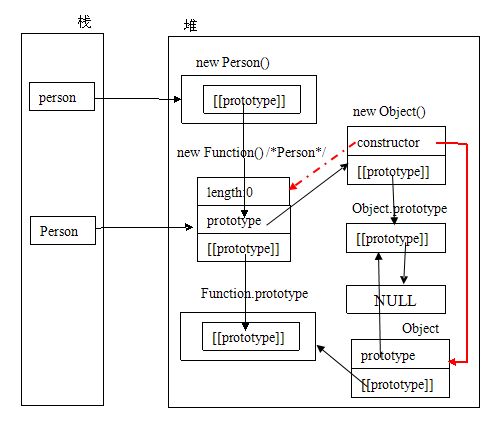超越Jquery_01_isPlainObject分析与重构 |
|
isPlainObject是Jquery1.4后提供的新方法,用于判断对象是否是纯粹的对象(通过 "{}" 或者 "new Object" 创建的) 。 复制代码 代码如下: var objStr = new Object(); alert(objStr.constructor);//String alert(isPlainObject(objStr));//false var objNum = new Object(3); alert(objNum.constructor);//Number alert(isPlainObject(objNum));//false function Person(){} var person = new Person(); alert(isPlainObject(person));//false var obj01 = new Object(); obj01.name = 笨蛋的座右铭; alert(isPlainObject(obj01));//true alert(isPlainObject({name:笨蛋的座右铭}));//true isPlainObject源码分析 以下代码为Jquery中的isPlainObject的完整版本,注释已经很详尽了,我就不多说什么了 。 复制代码 代码如下: var toString = Object.prototype.toString, hasOwnProperty = Object.prototype.hasOwnProperty; function isPlainObject( obj ) { // Must be an Object. // Because of IE, we also have to check the presence of the constructor property. //Make sure that DOM nodes and window objects dont pass through, as well //windows objects:toString.call(window):IE [object Object] FF [object Window] chrome [window global] safari [object DOMWindow] //DOM nodes:toString.call(#div01):IE [object Object] FF [object Window] chrome [object global] safari [object DOMWindow] //结论:obj.nodeType || obj.setInterval主要是针对于IE浏览器进行判断 //注:history,location,navigator,screen的setInterval为undefined if ( !obj || toString.call(obj) !== "[object Object]" || obj.nodeType || obj.setInterval ) { return false; } // Not own constructor property must be Object // 除去自定义对象和内置对象的判断,如function Person(){} var p = new Person();String,Number if ( obj.constructor //有constructor属性 && !hasOwnProperty.call(obj, "constructor") //并且constructor这个属性必须是在原型链中进行定义的 && !hasOwnProperty.call(obj.constructor.prototype, "isPrototypeOf")//并且原型中有isPrototypeOf方法,一般只有Object的原型中才有这个方法 ) { return false; } // Own properties are enumerated firstly, so to speed up, // if last one is own, then all properties are own. //针对于复杂类结构,如有继承... /* //一个简单的测试 function Animal(name){ } function Person(name,age){ Animal.call(this,name); this.age =age; } var p = new Person(jxl,20); for(key in p){ alert(hasOwnProperty.call( p, key ))//true , false } */ var key; for ( key in obj ) {} return key === undefined || hasOwnProperty.call( obj, key ); } 提出问题 个人感觉这个实现比较复杂,而且有BUG 。 简单的BUG,history,location,navigator,screen可以顺序通过 isPlainObject的检测返回true. 来看一个我的解决方案(修改BUG,简化): 复制代码 代码如下: function isPlainObject(obj){ if(obj&&Object.prototype.toString.call(obj)==="[object Object]"&&obj.constructor===Object &&!hasOwnProperty.call(obj, "constructor")){ var key; for ( key in obj ) {} return key === undefined || hasOwnProperty.call( obj, key ); } return false; } 还有BUG,而且是一个无解的BUG: 复制代码 代码如下: function m(){}; m.prototype.constructor=Object; //必杀 obj=new m; alert(isPlainObject(obj)); //true 再来一个同理的: 复制代码 代码如下: function m(){}; m.prototype = {}; obj=new m; alert(isPlainObject(obj)); //true 这个答案是无解的! 解答无解 本以为这个问题很好解决,结果深入后,发现这是一个无解的问题 。原因如下: 复制代码 代码如下: function Person(){}; Person.prototype.constructor=Object; var person=new Person; 让我们来看一下person现在的状态:  person和其构造函数Person唯一的联系就是其prototype链中的constructor属性 。而在我们判断是否为纯粹的对象主要是依据对象实例的constructor进行的 。如果我们将其指向Object,正如图中看到的那样,那么person和Person在代码上就没有关系了 。也正是因为这一点,让类型的判断出现了问题 。 |